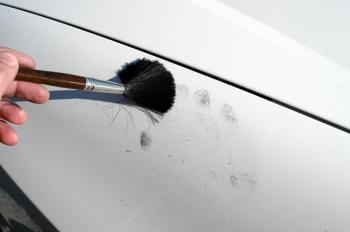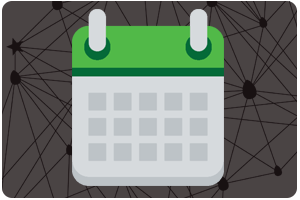
How do we use forensic science to solve crimes?

- School:
- Lely High
- Subject:
- Other
- Teacher:
- Maureen DeLacy
- Criminal Justice Academy
- Students Impacted:
- 180
- Grade:
- 9-12
- Date:
- September 7, 2021
Investor
Thank you to the following investor for funding this grant.
Suncoast Credit Union - $972.14
Original Grant Overview
Goal
The overarching goal of this project is for my students to understand the importance and reliability of science in crime scene investigation. We will be studying fingerprint analysis and identification, blood spatter detection and analysis, and bullet trajectory. As a criminal justice class, we will learn that forensic scientists use fingerprint analysis, blood spatter, and bullet trajectory to help reconstruct crime scenes and to identify offenders who participated in a particular crime.
It is my goal to teach my students about the uniqueness and reliability of fingerprint impressions in determining the identity of the individual(s) who left the impression behind. Students will learn that since the comparison of fingerprints began hundreds of years ago, no two fingerprint patterns have been found to be the same. Students will learn the types of patterns and minutia that form fingerprints that remain the same throughout one's life. Through their own experimentation, students will demonstrate that we leave fingerprints on everything we touch. Students will learn that forensic scientists can lift latent fingerprint impressions from surfaces for the identification of suspects. Students will learn several methods for lifting latent fingerprints from surfaces.
Students will study the characteristics of blood spatter including the size, shape, and spread of the blood droplets. Students will be able to determine the direction, speed, and type of weapon used from the shape and pattern of the blood droplets. Students will identify the location of the victim when the injury was suffered. Students will understand the chemical processes when using Luminol to detect the proteins in blood. Students will use Luminol to discover if and where blood was spattered in a specific location. Once discovered, the blood can be analyzed to determine the species, analyze the DNA, and/or blood typing.
My students will learn about trajectory and the path of a bullet that was fired. My students will use string, rods, and lasers to determine the trajectory of the bullet in a mock crime scene. My students will learn about ballistics, the study and identification of weapons and ammunition.
One conclusion that I hope my students discover is that solving crimes involves a variety of sciences and expertise. The criminal justice system relies on reliable and relevant evidence and facts to uphold a conviction. Science has become a major factor in proving and disproving cases in criminal court. Forensic science requires relevant education, qualifications, and experience to be allowable in court. I intend for my students to have greater confidence in the criminal justice system based on their knowledge of the sciences that are applied to the law.
What will be done with my students
Students will study the history of fingerprints and their use in sealing contracts and individual identification since ancient times.
Students will study a variety of historical methods used to obtain a known individual's fingerprints including clay, wax, ink, and scan.
Students will study the use of fingerprints in solving crimes, identifying victims, missing persons, and corpses.
Students will learn that submitting one's fingerprints is a legal requirement in many professions.
Students will learn the different types and patterns found in fingerprint impressions including arches, loops, and whorls, and unique minutia.
Students will learn that palm prints and footprints also leave unique impressions that can be used for identification.
Students will learn how to roll another's fingerprints in black ink and then roll each fingerprint impression onto an FBI Fingerprint card for analysis.
Students will analyze their own fingerprints and identify the unique patterns of arches, loops, and whorls.
Students will identify the minutia in their impressions.
Students will calculate the prevalence of the different arch, loop, and whorl patterns and the unique minutia.
Students will learn that each fingerprint pattern is unique on each finger and thumb.
Through their own experimentation, students will learn that latent fingerprint impressions are left on everything we touch including skin, fabric, and soft and hard surfaces.
Students will learn that forensic scientists can lift latent fingerprint impressions from most surfaces for further analysis and for the identification of suspects.
Students will learn various methods for discovering latent fingerprints including dusting, chemical applications, alternate light sources, superglue fuming, and others.
Students will dust hard surfaces to discover latent prints.
Students will tape and lift latent fingerprint impressions from flat and round surfaces.
Students will lay the tape on a white surface to discern the patterns and minutia in the latent impression.
Students will analyze and compare fingerprint patterns from known individuals to unknown prints found at a crime scene to solve a crime.
Students will review the national FBI Fingerprint database known as AIFIS.
Students will understand the reaction caused by the substance Luminol when mixed with the proteins in blood even when the blood has been cleaned up.
Students will create discrete blood spatter droplets and spray Luminol on them to verify that the droplets fluoresce in the presence of blood.
Students will study the science of ballistics and bullet trajectory.
Students will use string, rods, and lasers to determine the flight path of a bullet in a mock crime scene.
My students will learn that forensic science principles and techniques must meet stringent standards to be used in a court of law.
Benefits to my students
My students will be exposed to numerous disciplines and multiple hands-on experiences in this project. My students will study crime scene investigation procedures, preservation of the crime scene, collection of evidence, preservation of evidence, chain of custody of evidence, contamination of evidence, the history of fingerprints, the science of fingerprints, the chemistry of Luminol and blood proteins, the science of ballistics and bullet trajectory, courtroom rules and procedures, the Bill of Rights, Constitutional protections against illegal search and seizure, criminal law statutes, laws relating to expert witnesses testimony, requesting warrants, and statutes of limitations.
My students will understand the role of science in proving and disproving criminal cases. My students will deepen their knowledge of the uniqueness of fingerprints and their reliability as a source of individual identification. My students will understand the patterns and characteristics of fingerprint impressions. My students will know the difference between visible and latent prints and the methods to discover and lift latent prints. My students will learn about the national FBI fingerprint database known as AIFIS and its use in the identification of suspects as well as missing persons, military personal, police officers, teachers, bankers, lawyers, and other professionals.
My students will demonstrate an understanding of the chemical reaction between Luminol and blood proteins when Luminol is used to detect blood spatter in crime scenes where the blood has been cleaned up. My students will know the procedures for determining whether a red substance is animal or human blood, or some other substance.
My students will demonstrate an understanding of the science of ballistics and its role in solving crimes. My students will understand and implement a working knowledge of bullet trajectory by finding the trajectory of a bullet in a mock crime scene using string, rods, and lasers.
My students will know the professional standards required for forensic scientists who work in crime scene investigation. My students will understand the criminal justice process from the commission of a crime, the crime scene investigation, the arrest, pretrial motions, to trial.
Budget Narrative
Most of the items requested are being ordered through Arrowhead Forensics which only sells to law enforcement and educational institutions. I am very aware that forensic science items are expensive. I truly appreciate Any assistance that is offered for the purchase of ANY of these items.
Our Criminal Justice Academy offers four years of course work including one year devoted to crime scene investigation. These tools would help immensely.
ARROWHEAD FORENSICS
PRODUCT NAME PRICE QTY SUBTOTAL
SUBTOTAL $642.64
SHIPPING & HANDLING (FEDEX - GROUND) $27.92
GRAND TOTAL $670.56
FIELD FINGERPRINT KIT
$113.25 2 $226.50
KIT SIZE FIBER BRUSH
$8.05 10 $80.50
ZENITH MAGNETIC APPLICATOR
$26.00 4 $104.00
SYNTHETIC BLOOD - 8 OZ
$25.52 2 $51.04
POLYETHYLENE STRETCH LIFTING TAPE - CLEAR - 2" X 360"
$13.60 3 $40.80
LUMINOL POWDER PACKS
$39.00 2 $78.00
MULTI-COLORED FORENSIC RODS WITH CONNECTORS
$30.90 2 $61.80
Identicator Perfect Print Rectangular Ink Pad, 3 X 4.25 -Inch 55.50 each Quantity 5 Subtotal $277.50
Plus $19.40 Tax Free Shipping Total $296.55
Zogics | 75% Alcohol Surface Sanitizing Wipes Tub
(150 wipes per tub), (12 tubs per case)
Free Shipping and No Tax Total $32.95
Items
| # | Item | Cost |
|---|---|---|
| 1 | Field Fingerprint Kit A-2211 Quantity 2 | $226.50 |
| 2 | Kit Size Fiber Brush A-2499 Quantity 10 | $80.50 |
| 3 | Zenith Magnetic Applicator A-2917 Quantity 4 | $104.00 |
| 4 | Synthetic Blood 8 oz. A1219B Quantity 2 | $51.04 |
| 5 | Polyethylene Stretch Lifting Tape Clear A-2302 Quantity 3 | $40.80 |
| 6 | Luminol Powder Packs A-PF030 Quantity 2 | $78.00 |
| 7 | Multi-Colored Forensic Rods with Connectors A-6925 Quantity 2 | $61.80 |
| 8 | Zogics Alcohol Surface Wipes Quantity 1 Case = 12 Tubs | $32.95 |
| 9 | Identicator Perfect Print Rectangular Ink Pad, 3 X 4.25 -Inch Quantity 5 | $296.55 |
| Total: | $972.14 |



Share
Please share this page to help in fulfilling this grant.
Email to a Friend